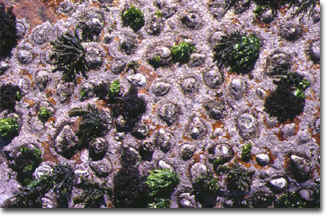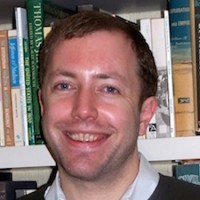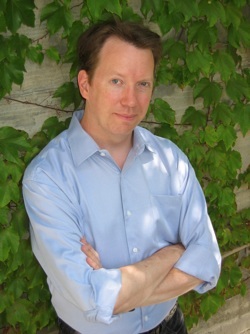Michael J. Behe's Blog, page 538
January 18, 2019
How Darwinism misled biologists about lichens
 dog-pelt lichens/Karen Dillman, USFS
dog-pelt lichens/Karen Dillman, USFSThey spent a lot of time ridiculing what they should have been studying. They ridiculed the now commonly accepted idea that a lichen was algae and fungi living as if they were one organism:
The very notion of different organisms living so closely with—or within—each other was unheard of. That they should coexist to their mutual benefit was more ludicrous still. This was a mere decade after Charles Darwin had published his masterpiece, On the Origin of Species, and many biologists were gripped by the idea of nature as a gladiatorial arena, shaped by conflict. Against this zeitgeist, the concept of cohabiting, cooperative organisms found little purchase. Lichenologists spent decades rejecting and ridiculing Schwendener’s “dual hypothesis.” And he himself wrongly argued that the fungus enslaved or imprisoned the alga, robbing it of nutrients. As others later showed, that’s not the case: Both partners provide nutrients to each other.Ed Yong, “The Overlooked Organisms That Keep Challenging Our Assumptions About Life” at The Atlantic
It’s a remarkably sane article, acknowledging that it’s quite possible that lichens may contain a number of different fungi cooperating with algae as one and that “the relationships between all the components of a lichen are probably highly contextual—beneficial in some settings, neutral or harmful in others.”
Indeed. Much devolution (the flip side of evolution, where life forms jettison complex structures over time) seems to involve life forms outsourcing some functions to their symbionts (but then the two, of course, become mutually dependent).
See also: Researchers: Coralline red algae existed 300 million years earlier than thought “Red algae play an extremely important role in the world’s oceans today.” And they didn’t have a long time to organize themselves to be the ecology anchor either, it seems.
Intelligent design as “rube-bait” and David Klinghoffer’s response Williamson typifies how the Darwinian impulse plays out in popular culture.
and
Devolution: Getting back to the simple life
Follow UD News at Twitter!
Copyright © 2019 Uncommon Descent . This Feed is for personal non-commercial use only. If you are not reading this material in your news aggregator, the site you are looking at is guilty of copyright infringement UNLESS EXPLICIT PERMISSION OTHERWISE HAS BEEN GIVEN. Please contact legal@uncommondescent.com so we can take legal action immediately.
Plugin by Taragana
Chromosomes organize to ensure each nose cell expresses only one smell receptor
For the same type of reason, perhaps, as each key only produces one letter (prevents information from being degraded even as it is produced). Researchers have learned that mice use a sort of “high-tech” hub to ensure that only one odor-sensing receptor is expressed in each neuron:
Mammals can discriminate between a vast number of volatile compounds — perhaps more than a trillion1. This extraordinary capacity is encoded by a repertoire of hundreds of olfactory-receptor genes, distributed in small groups that are present on almost all chromosomes2. To ensure that the response to individual odours is specific, each olfactory sensory neuron (OSN) expresses a single, randomly selected olfactory-receptor gene. Writing in Nature, Monahan et al.3 show that, in the nuclei of mouse OSNs, certain regions of multiple chromosomes assemble in a structure that controls the expression of the full repertoire of olfactory-receptor genes in the nose, while making sure that each cell expresses only one type of receptor. These exciting findings show that interchromosomal interactions can have a determinant role in regulating gene expression.François Spitz, “Chromosomes come together to help mice distinguish odours” at Nature
A reader wrote to say, “More evidence that spatial information regulates gene expression.”
The genome is partitioned into topologically associated domains and genomic compartments with shared chromatin valence. This architecture is constrained by the DNA polymer, which precludes interactions between genes on different chromosomes. Here we report a marked divergence from this pattern of nuclear organization that occurs in mouse olfactory sensory neurons. Chromatin conformation capture using in situ Hi-C on fluorescence-activated cell-sorted olfactory sensory neurons and their progenitors shows that olfactory receptor gene clusters from 18 chromosomes make specific and robust interchromosomal contacts that increase with differentiation of the cells. These contacts are orchestrated by intergenic olfactory receptor enhancers, the ‘Greek islands’, which first contribute to the formation of olfactory receptor compartments and then form a multi-chromosomal super-enhancer that associates with the single active olfactory receptor gene. The Greek-island-bound transcription factor LHX2 and adaptor protein LDB1 regulate the assembly and maintenance of olfactory receptor compartments, Greek island hubs and olfactory receptor transcription, providing mechanistic insights into and functional support for the role of trans interactions in gene expression. Monahan, K., Horta, A. & Lomvardas, S. Nature https://doi.org/10.1038/s41586-018-08... (2019). Abstract: (paywall) More.
See also: 2018 Saw Mechanobiology, Including Biophysics, Come To The Fore
Follow UD News at Twitter!
Copyright © 2019 Uncommon Descent . This Feed is for personal non-commercial use only. If you are not reading this material in your news aggregator, the site you are looking at is guilty of copyright infringement UNLESS EXPLICIT PERMISSION OTHERWISE HAS BEEN GIVEN. Please contact legal@uncommondescent.com so we can take legal action immediately.
Plugin by Taragana
Will AI art end the artist’s life?

Rather than announce that human artists are now doomed, software engineer Ben Dixon interviewed a number of them and came away with a rather different picture, that “AI-generated art will improve, but artistic creativity will remain a human discipline.” “[article title]” at Mind Matters
It cuts both ways. Artists can instantiate their ideas more efficiently using better tools. Michelangelo could be more precise than the Stone Age cave artists. But artists can’t just use AI to automate creativity so that the machine writes masterpieces while they doze off. Information does not create and arrange itself via magic.
See also: Could AI write novels?
Screenwriters jobs are not threatened by artificial intelligence Unless the public starts preferring mishmash to creativity (Robert J. Marks)
2 AI hype for 2018: AI can write novels and screenplays better than the pros! (Robert J. Marks)
Follow UD News at Twitter!
Copyright © 2019 Uncommon Descent . This Feed is for personal non-commercial use only. If you are not reading this material in your news aggregator, the site you are looking at is guilty of copyright infringement UNLESS EXPLICIT PERMISSION OTHERWISE HAS BEEN GIVEN. Please contact legal@uncommondescent.com so we can take legal action immediately.
Plugin by Taragana
January 17, 2019
Researchers: Coralline red algae existed 300 million years earlier than thought

Coralline alga Spongites yendoi/
Derek Keats (CC BY-SA 3.0
Four hundred and thirty million years ago, according to ScienceDaily:
The discovery made by FAU palaeontologists Dr. Sebastian Teichert, Prof. Dr. Axel Munnecke and their Australian colleague Dr. William Woelkerling has far-reaching consequences. ‘Our finds mean that we must now look at the fossil record in a completely new way’, explains Dr. Sebastian Teichert. Up to now, a higher age for coralline red algae was thought to be so unlikely that fossils found in layers of rock older than the Cretaceous Period were not even considered as coralline red algae simply due to their age. The fossil record comprises all documented occurrences of fossils and is the essential source of information about how life on Earth developed. A re-evaluation of the fossils in the record could help scientists to answer new questions regarding the development of coralline red algae.
‘The fact that coralline red algae occur so much earlier in the Earth’s history sheds new light on several issues in ecology’, says Teichert. Red algae play an extremely important role in the world’s oceans today. For example, their calcareous skeletons ensure that coral reefs in the tropics remain stable and are even able to withstand heavy storms. In the Arctic, on the other hand, red algae take on the role of so-called ecosystem engineers. Their growth provides habitat for a large number of other organisms. Paper. (paywall) – Sebastian Teichert, William Woelkerling, Axel Munnecke. Coralline red algae from the Silurian of Gotland indicate that the order Corallinales (Corallinophycidae, Rhodophyta) is much older than previously thought. Palaeontology, 2019; DOI: 10.1111/pala.12418 More.
Note: “Red algae play an extremely important role in the world’s oceans today.” And they didn’t have a long time to organize themselves to be the ecology anchor either, it seems.
See also: Flowers bloomed in the early Jurassic, 50 million years earlier than thought
and
Feathers originated 70 million years earlier than thought It certainly is “amazing,” as Professor Benton says, that a complex array of features appeared 250 million years ago, rather abruptly, just as life was recovering from the Permian extinction. Would anyone have predicted that? Talk about “fossil rabbits in the Cambrian.”
Copyright © 2019 Uncommon Descent . This Feed is for personal non-commercial use only. If you are not reading this material in your news aggregator, the site you are looking at is guilty of copyright infringement UNLESS EXPLICIT PERMISSION OTHERWISE HAS BEEN GIVEN. Please contact legal@uncommondescent.com so we can take legal action immediately.
Plugin by Taragana
Human-like lifespan 100,000–200,000 years ago?

Dental remains of the Xujiayao juvenile
Teeth from the upper jaw of a child (the Xujiayao child) of about 6 and a half, who died between 100,000-200,000 years ago were examined by X-ray:
But the ancient child’s overall dental growth and development falls within the range observed among kids today, paleoanthropologist Song Xing of the Chinese Academy of Sciences in Beijing and her colleagues report online January 16 in Science Advances. That humanlike rate of dental development suggests that the youngster belonged to an East Asian Homo population with a relatively long life span and an extended period of child care, the researchers speculate. Those characteristics are associated with present-day humans’ lengthy period of tooth growth.Bruce Bower, “An ancient child from East Asia grew teeth like a modern human” at Science News
Abstract: Several human dental traits typical of modern humans appear to be associated with the prolonged period of development that is a key human attribute. Understanding when, and in which early hominins, these dental traits first appeared is thus of strong interest. Using x-ray multiresolution synchrotron phase-contrast microtomography, we quantify dental growth and development in an archaic Homo juvenile from the Xujiayao site in northern China dating to 161,000–224,000 years or 104,000–125,000 years before present. Despite the archaic morphology of Xujiayao hominins, most aspects of dental development of this juvenile fall within modern human ranges (e.g., prolonged crown formation time and delayed first molar eruption). For its estimated age-at-death (6.5 years), its state of dental development is comparable to that of equivalently aged modern children. These findings suggest that several facets of modern human dental growth and development evolved in East Asia before the appearance of fully modern human morphology. (open access) Song Xing, Paul Tafforeau, Mackie O’Hara, Mario Modesto-Mata, Laura Martín-Francés, María Martinón-Torres, Limin Zhang, Lynne A. Schepartz, José María Bermúdez de Castro and Debbie Guatelli-Steinberg, First systematic assessment of dental growth and development in an archaic hominin (genus, Homo) from East Asia Science Advances 16 Jan 2019: Vol. 5, no. 1, eaau0930 DOI: 10.1126/sciadv.aau0930 More.
The more we know, the more our ancestors seem like ourselves.
See also: Researcher: Teeth are an astonishing source of information
Two Neanderthal Children From 250 Kya Showed Lead Exposure, And Much Else
Researcher: Ancient people were NOT all dead by 30 years of age This matter is worth clarifying because people arguing dubious claims about the mindset of ancient man sometimes assume that few people were around much beyond thirty years of age. But enough of them were around that the lifespan of 70 to 80 years was accepted as the norm for a human being, irrespective of the percentage of the population that reached it.
Copyright © 2019 Uncommon Descent . This Feed is for personal non-commercial use only. If you are not reading this material in your news aggregator, the site you are looking at is guilty of copyright infringement UNLESS EXPLICIT PERMISSION OTHERWISE HAS BEEN GIVEN. Please contact legal@uncommondescent.com so we can take legal action immediately.
Plugin by Taragana
Intelligent design as “rube-bait” and David Klinghoffer’s response
 Kevin D. Williamson
Kevin D. WilliamsonRecently, an American thinkmag hosted a spiteful little swipe at ID:
The Republicans, for their part, have devolved from the holier-than-thou party of the Moral Majority to the prolier-than-thou party of Donald Trump, the party that talks about the “Real America” in accents purporting to be Texan but native to no part of the Lone Star State, the party of Duck Dynasty and bad FM country music, the party of such daft rube-bait as “intelligent design,” and the party that sneers at many of the most successful parts of this country — Wall Street, Silicon Valley, the Ivy League, Hollywood — as cultural sewers. Kevin D. Williamson, “The Politics of Snobbery, and Its Inverse” at National Review
 Responding to the uninformed attack on ID, Evolution News and Science Today: editor David Klinghoffer
Responding to the uninformed attack on ID, Evolution News and Science Today: editor David Klinghoffer
From this and previous comments of his, I’m pretty sure that Williamson has little or no idea how advocates of intelligent design make their case, identifying scientific evidence of a guiding purpose at work in biology and cosmology, as against Darwinism’s insistence on blind processes alone.
Williamson and I are alike in idolizing NR’s founder, William F. Buckley Jr., and Kevin has written movingly about his interactions with WFB. I am surprised that he doesn’t seem to know that many of the great figures of the conservative intellectual past, including Buckley, tended toward skepticism on Darwinism or sympathy for design — in no particular order, Richard John Neuhaus, Irving Kristol and Gertrude Himmelfarb, Tom Wolfe, Richard Weaver. In Witness, Whittaker Chambers beautifully described awaking from the spell of Communism upon contemplating the “immense design” of his little daughter’s ear. Buckley hosted a Firing Line debate on intelligent design, which he argued for alongside his fellow debaters, mathematician David Berlinski, biochemist Michael Behe, and U.C. Berkeley law professor Phillip Johnson, all affiliated with Discovery Institute. Commentary published Berlinski’s great series of attacks on Darwinian orthodoxy. And so on. David Klinghoffer, “The Ultimate Question of Life’s Origins” at National Review
As Klinghoffer notes, these people’s skepticism doesn’t by itself prove anything. Except this: Today’s support for Darwinism is largely built on laziness. As noted earlier, The Darwinians and their protected in-house critics have the additional advantage of an adoring, incurious, and gladly ignorant media who just want to believe that they are “science,” file a story and go home.
Klinghoffer offers his vid, The Information Enigma by way of rebuttal. But rebuttal almost misses the point. Today’s Darwinism is a snipe on Twitter, a swipe in passing, a slogan on a whiteboard, a well-practiced rant – not something it would make sense to ask anyone to support with reference to facts or coherent ideas. Williamson’s got that right. No arguing with fashion.
See also: Why did an evolutionary biology prof imply world-famous chemist James Tour was “stupid”? A writer encountered this all-too-common type of behavior recently and was, well, surprised. To see why it feels normal to many of us, it is helpful to understand a bit about Darwinism as a social phenomenon.
Follow UD News at Twitter!
Copyright © 2019 Uncommon Descent . This Feed is for personal non-commercial use only. If you are not reading this material in your news aggregator, the site you are looking at is guilty of copyright infringement UNLESS EXPLICIT PERMISSION OTHERWISE HAS BEEN GIVEN. Please contact legal@uncommondescent.com so we can take legal action immediately.Plugin by Taragana
Why did an evolutionary biology prof imply world-famous chemist James Tour was “stupid”?
A writer encountered this all-too-common type of behavior recently and was, well, surprised. To see why it feels normal to many of us, it is helpful to understand a bit about Darwinism as a social phenomenon.

Faithful readers of various vintages will, of course, remember University of Toronto evolutionary biologist Larry Moran, best known publicly through his blog Sandwalk. At his blog Southern Prose, writer John Leonard happened to come across him the other day trashing well-known chemist James Tour. That was back in 2014 but the internet is forever. Tour signed the Discovery Institute statement, “A Scientific Dissent from Darwinism” (2001), calling for more openness on discussion of evolution: “We are skeptical of claims for the ability of random mutation and natural selection to account for the complexity of life. Careful examination of the evidence for Darwinian theory should be encouraged. Careful examination of the evidence for Darwinian theory should be encouraged.”
Moran conceded:
There are many excellent evolutionary biologists who could have signed the statement published by the Discovery Institute. They are not Darwinists and they believe that there is more to evolution than natural selection. Furthermore, all scientists believe that careful examination of evidence is necessary. Larry Moran, “A chemist who doesn’t understand evolution” at Sandwalk

James Tour (CC0)
At the time the Dissent statement was written, media releases quoted Darwin from 150 years ago as if he were Holy Writ. Indeed, it’s only in recent years that some of us have begun to notice a lessening of the nauseous trend, no small thanks to people with an eye on the news and an active gag reflex, some of whom signed the statement. But then Moran goes after Tour for signing the statement and says,
I suppose I’m going to be labeled as one of those evil “Darwinists” who won’t tolerate anyone who disagrees with me about evolution. I’m actually not. I just don’t like stupid people who think they are experts in evolution when they have never bothered to learn about it. Here’s my advice to graduate students in organic chemistry: if you want to know about evolution then take a course or read a textbook. And remember, there’s nothing wrong with admitting that you don’t understand a subject. Just don’t assume your own ignorance means that all the experts in the subject are wrong too. Larry Moran, “A chemist who doesn’t understand evolution” at Sandwalk
Leonard replied recently by asking why Moran is implying that Tour is stupid, citing Tour’s accomplishments (from Tour’s site):
(Dr.) Tour has over 650 research publications and over 120 patents, with an H-index = 136 (107 by ISI Web of Science) and i10 index = 605 with total citations over 87,000 (Google Scholar). He was inducted into the National Academy of Inventors in 2015. Tour was named among “The 50 Most Influential Scientists in the World Today” by TheBestSchools.org in 2014; listed in “The World’s Most Influential Scientific Minds” by Thomson Reuters ScienceWatch.com in 2014; and recipient of the Trotter Prize in “Information, Complexity and Inference” in 2014; and was the Lady Davis Visiting Professor, Hebrew University, June, 2014. Tour was named “Scientist of the Year” by R&D Magazine, 2013. He was awarded the George R. Brown Award for Superior Teaching, 2012, Rice University; won the ACS Nano Lectureship Award from the American Chemical Society, 2012; was the Lady Davis Visiting Professor, Hebrew University, June, 2011 and was elected Fellow of the American Association for the Advancement of Science (AAAS), 2009. Tour was ranked one of the Top 10 chemists in the world over the past decade, by a Thomson Reuters citations per publication index survey, 2009; won the Distinguished Alumni Award, Purdue University, 2009 and the Houston Technology Center’s Nanotechnology Award in 2009. He won the Feynman Prize in Experimental Nanotechnology in 2008, the NASA Space Act Award in 2008 for his development of carbon nanotube reinforced elastomers and the Arthur C. Cope Scholar Award from the American Chemical Society for his achievements in organic chemistry in 2007. Tour was the recipient of the George R. Brown Award for Superior Teaching in 2007. He also won the Small Times magazine’s Innovator of the Year Award in 2006, the Nanotech Briefs Nano 50 Innovator Award in 2006, the Alan Berman Research Publication Award, Department of the Navy in 2006, the Southern Chemist of the Year Award from the American Chemical Society in 2005 and The Honda Innovation Award for Nanocars in 2005. Tour’s paper on Nanocars was the most highly accessed journal article of all American Chemical Society articles in 2005, and it was listed by LiveScience as the second most influential paper in all of science in 2005. Tour has won several other national awards including the National Science Foundation Presidential Young Investigator Award in Polymer Chemistry and the Office of Naval Research Young Investigator Award in Polymer Chemistry. John Leonard, “Calling the Wrong Guy Stupid” at Southern Prose
Leonard wonders why Dr. Moran, who has fewer recorded accomplishments, would imply that the eminent Dr. Tour is stupid. Ah, a question we can answer: to isolate people who critique the way things have been done in evolutionary biology for a century and more, no matter what their basis or their background or what the outcome of more candor would be.
Most people of talent who have questions cannot both work productively and deal with dozens of aggrieved mediocrities, to say nothing of the newer problem of trolls with little minds and big platforms.
By analogy, that’s how stagnant systems survive. Life forms that would shake them up prefer healthier conditions. They either cannot tolerate the stagnation and don’t stay or else they stay but don’t do much.
The Darwinians and their protected in-house critics like Larry Moran have the additional advantage of an adoring, incurious, and gladly ignorant media who just want to believe that they are helping “science,” file a story, and go home. Hey, in the ecology of news, their nonsense helps keep Uncommon Descent in business among the ruins.
If that’s not enough explanation, we will gladly provide more. It’s just that not many people ask. Perhaps more people should.
Hat tip: Philip Cunningham
\
See also: A World-Famous Chemist Tells The Truth: There’s No Scientist Alive Today Who Understands Macroevolution (March 6, 2014) Nearly 375,000 people have visited this post featuring James Tour.
Follow UD News at Twitter!
Copyright © 2019 Uncommon Descent . This Feed is for personal non-commercial use only. If you are not reading this material in your news aggregator, the site you are looking at is guilty of copyright infringement UNLESS EXPLICIT PERMISSION OTHERWISE HAS BEEN GIVEN. Please contact legal@uncommondescent.com so we can take legal action immediately.
Plugin by Taragana
January 16, 2019
But Belief in Design is a Science Stopper!
I fear my ears are going to bleed the next time I hear some materialist bleating about how design is a science stopper.
On second thought, maybe the conversation will go something like this:
Materialist: But design is a science stopper.
Barry: Dang. Isaac Newton said this:
“This most beautiful system of the sun, planets and comets, could only proceed from the counsel and dominion of an intelligent and powerful Being.”
And because he believed that he was unable to:
Discover the laws of motion
Discover universal gravitation
Make seminal contributions to the science of optics
Prove Kepler’s theory of planetary motion
Account for tides, the trajectory of comets, and the precession of the equinoxes
Build the first practical reflecting telescope
Discover that the earth is an oblate spheroid
Oh, wait . . .
Copyright © 2019 Uncommon Descent . This Feed is for personal non-commercial use only. If you are not reading this material in your news aggregator, the site you are looking at is guilty of copyright infringement UNLESS EXPLICIT PERMISSION OTHERWISE HAS BEEN GIVEN. Please contact legal@uncommondescent.com so we can take legal action immediately.
Plugin by Taragana
How can consciousness be a material thing?

Maybe it can’t. But materialist philosophers face starkly limited choices in how to view consciousness.
In analytical philosopher Galen Strawson’s opinion, our childhood memories of pancakes on Saturday, for example, are—and must be— “wholly physical.” Taking other philosophers to task, he says,
The situation grows stranger when one reflects that almost all their materialist forebears, stretching back over 2,000 years to Leucippus and Democritus, completely reject the view that experience can’t be physical, and hold instead (as all serious materialists must) that experience is wholly physical. Russell made the key observation in 1927: “We do not know enough of the intrinsic character of events outside us to say whether it does or does not differ from that of ‘mental’ events”—whose nature we do know. He never wavered from this point. In 1948, he noted that physics simply can’t tell us “whether the physical world is, or is not, different in intrinsic character from the world of mind.” In 1956, he remarked that “we know nothing about the intrinsic quality of physical events except when these are mental events that we directly experience.” But the Deniers weren’t listening, and they still aren’t. (March 13, 2018) More.
See also: Consciousness Studies Is a “Bizarre” Field of Science
Panpsychism: You are conscious but so is your coffee mug
Copyright © 2019 Uncommon Descent . This Feed is for personal non-commercial use only. If you are not reading this material in your news aggregator, the site you are looking at is guilty of copyright infringement UNLESS EXPLICIT PERMISSION OTHERWISE HAS BEEN GIVEN. Please contact legal@uncommondescent.com so we can take legal action immediately.
Plugin by Taragana
Rob Sheldon responds to cosmologist Sean Carroll’s 19 True Facts of Cosmology

Sean Carroll
Cosmologist Sean Carroll offers a list of true facts about cosmology and our physics color commentator Rob Sheldon replies. Here are the first four of Dr. Carroll’s facts list (of 19):
1. The Big Bang model is simply the idea that our universe expanded and cooled from a hot, dense, earlier state. We have overwhelming evidence that it is true.
2. The Big Bang event is not a point in space, but a moment in time: a singularity of infinite density and curvature. It is completely hypothetical, and probably not even strictly true. (It’s a classical prediction, ignoring quantum mechanics.)
3. People sometimes also use “the Big Bang” as shorthand for “the hot, dense state approximately 14 billion years ago.” I do that all the time. That’s fine, as long as it’s clear what you’re referring to.
4. The Big Bang might have been the beginning of the universe. Or it might not have been; there could have been space and time before the Big Bang. We don’t really know.Sean Carroll, “True Facts About Cosmology (or, Misconceptions Skewered)” at Preposterous Universe
From Rob Sheldon: Sean Carroll, an avowed atheist in the “scientism” camp of Bill Nye and Jerry Coyne, has made a list of apologia for the Big Bang (hereafter BB). You might wonder why there needs to be any apology at all if, as he himself says, “We have overwhelming evidence that it is true.”
One answer might be that BB is many things to many people. Only a single version has “overwhelming evidence,” so we need a clarifying definition. A better answer than he offers might be that BB enthusiasts have made a lot of specious claims that they attempt to attach to the BB’s sterling reputation. So we need to debarnacle the ship. But perhaps the best answer might be that critics have undermined a lot of the “overwhelming evidence” so that the very idea of a single valid theory is under attack.
For all these stated reasons, as well as the unstated atheist reasons, Sean mounts a siege wall around BB. Here’s my take on his claims.
1. Sean gives a minimalist definition of a BB model as “hot” and “dense”. Historically it had a few more attributes, but like the Monitor gunboat, Sean is trying to lower the size of the target.
2. Sean separates the timing from the model, and then claims the model is true but its timing is only hypothetical. That’s a bit like saying that BigFoot is real, but sightings of him are hypothetical. Now, we can see the rhetorical point of the minimalist definition–by never specifying what “hot/dense” means, he can accommodate alternative BB models that never had a singularity, and therefore have only a hypothetical “starting point.”
3. Sean acknowledges that sometimes “BB” is defined as this “hypothetical starting point” that probably doesn’t exist. (“BigFoot sightings” is just vulgar shorthand for “people’s confused impressions” not to be taken as evidence.)
4. Sean really believes that we can never know if the universe had a beginning. We must be a dedicated agnostic about the timing, but faithful believers about its effects.
(At this point, readers, please go back to Dr. Carroll’s blog to read the other 19, comments on which appear below:)
5. Even if we are agnostic about BB timing, Sean tells us, we must be orthodox Democriteans, “nothing comes from nothing”. No possible doubts about “ex nihilo”. No Augustine and certainly no Aquinas is permitted here.
6. What about that mathematical proof that agnosticism is impossible because “bouncing BB” will violate special relativity? Just close your eyes and remember, it is just math, not evidence of the real world like the “overwhelming evidence” of #1.
7. “Bubble universe” enthusiasts (yes, Sean’s talking to you, Lawrence Krauss) are cranks. (No argument from me.)
8. But, Sean avers, we shouldn’t dismiss BB as violating energy conservation, because gravity is negative energy that neatly balances the positive energy of matter. (But Sean, how would we know, since it isn’t derivable from any law of nature or math? Once again, Sean wants us just to believe, on the long shot that maybe the multiverse turns out to be right after all.)
9. Sean doesn’t believe in mass-energy conservation even if it is dogma in the BB. (So where does it go Sean, into the fifth dimension? It’s hard to know what Sean holds most dear–mathematical rigor or physical intuition. He seems to waffle at all the critical moments.)
10. Sean displays a bit of philosophy to show why cosmologists live on a higher-dimensional plane than the rest of us.
11. Sean is not agnostic about inflation, just a gambler hedging his bets. (If you actually looked at the way the theory has evolved, with one kludge added on top of another to create these tottering towers of speculation, it says a lot about your politics to admit being a bettor.)
12. Sean tries to solve the BB entropy problem the same way he solved the BB energy problem: First he says that it doesn’t exist and then he says that gravity solves it.
13. Sean treats dark matter the way he treats BigFoot–no sightings but it must exist. (Of all the reasons to infer dark matter, he picks the weakest, a model-dependent analysis of cosmic background radiation. I happen to think that the original galaxy rotation rates are the best data, but Sean is trying to avoid the politics of the MOND battle, so he went for the circular logic proof. Of course he would.)
14. This is the BigFoot argument once again. But someday we will have the technology to find him. (My patience isn’t lacking, Sean; it’s my pocketbook.)
15. More betting language on the existence of dark energy—but we knew already that Sean doesn’t believe in the conservation of mass-energy. (Sean believes only in the Democritean conservation of nothing.)
16. Not sure who this diatribe is directed against, Sean reminds us that energy and force have different units. (Can’t disagree with him there.)
17. More betting language on the theory of dark energy.
18. He admits he doesn’t have a theory of dark energy either.
19. But don’t dare compare dark energy to a disgraced 200-year old theory of aether!
So what has Sean’s apologia accomplished? Despite many contortions, he managed only two lines in the sand: The multiverse doesn’t exist and dark matter does. And I’m sure if we put a bit of pressure on him, we might get him to change his mind about multiverse and dark matter too.
It’s getting hard to find a principled atheist nowadays.
See also: Rob Sheldon on the physics wars: Stagnation or no?
Cosmologist Sean Carroll: A Multiverse Is “Beyond Falsifiability” – And That’s Okay With Him
and
Cosmologist Sean Carroll: Is anything constant? Rob Sheldon replies to Sean Carroll
Follow UD News at Twitter!
Copyright © 2019 Uncommon Descent . This Feed is for personal non-commercial use only. If you are not reading this material in your news aggregator, the site you are looking at is guilty of copyright infringement UNLESS EXPLICIT PERMISSION OTHERWISE HAS BEEN GIVEN. Please contact legal@uncommondescent.com so we can take legal action immediately.Plugin by Taragana
Michael J. Behe's Blog
- Michael J. Behe's profile
- 219 followers



